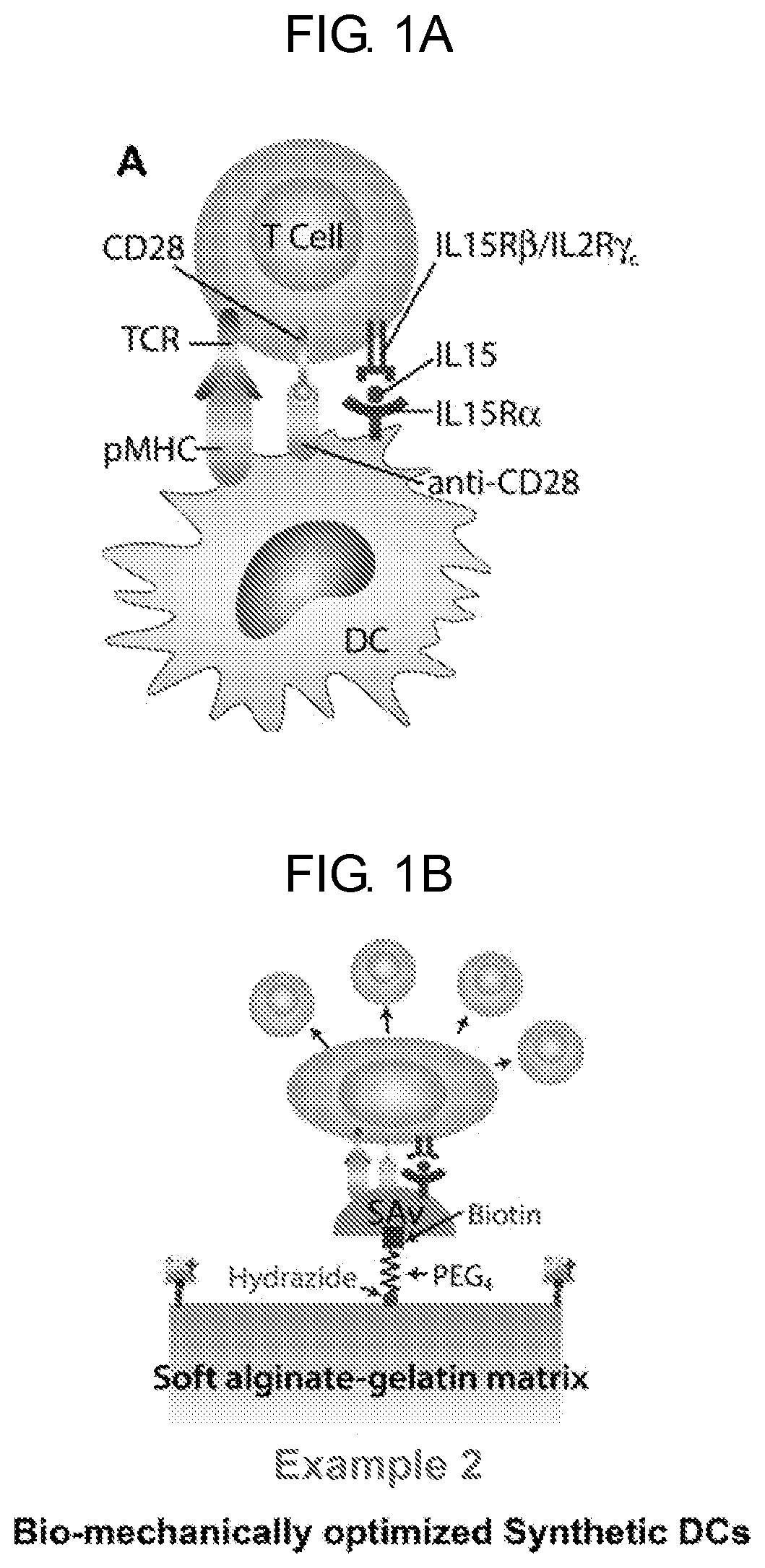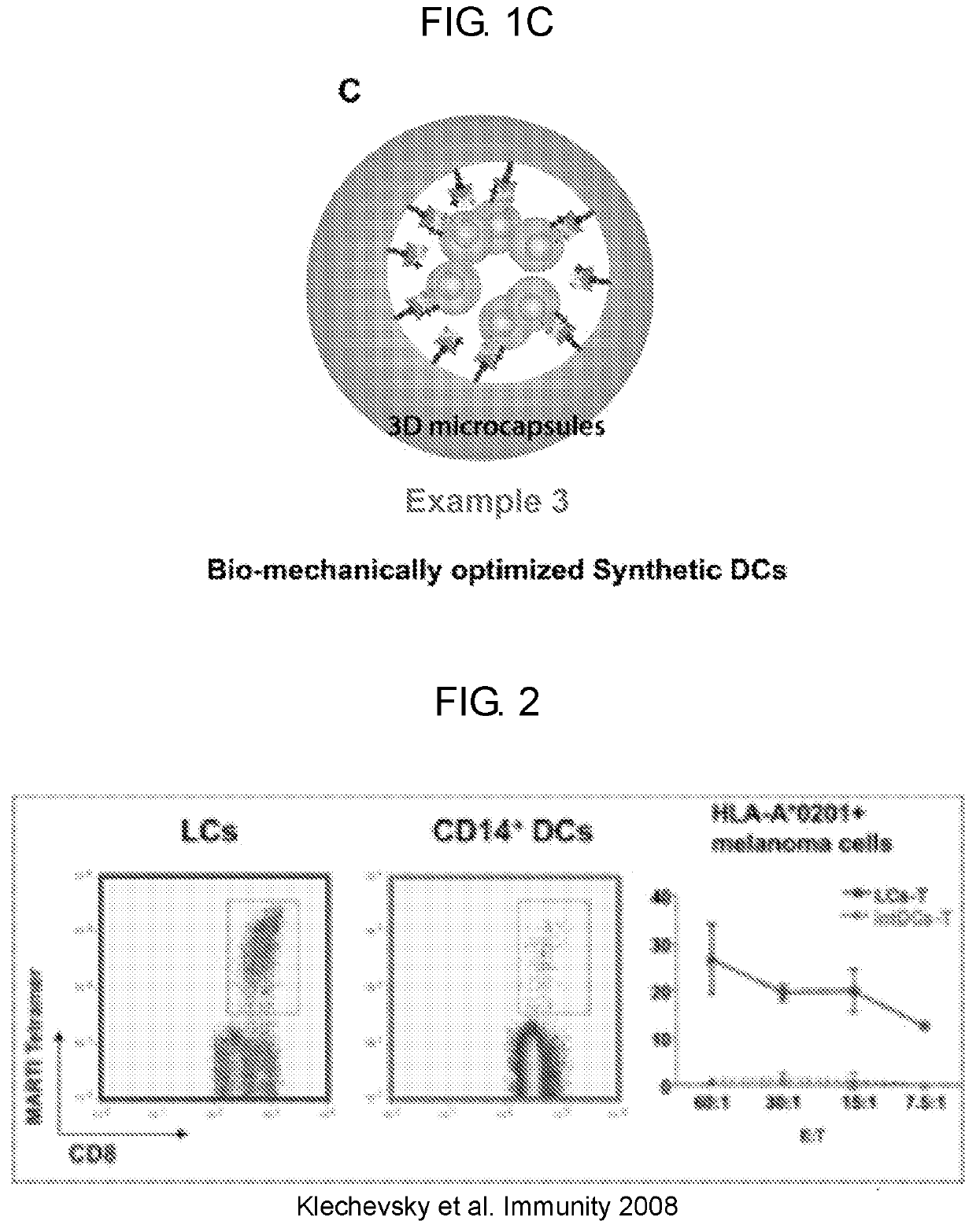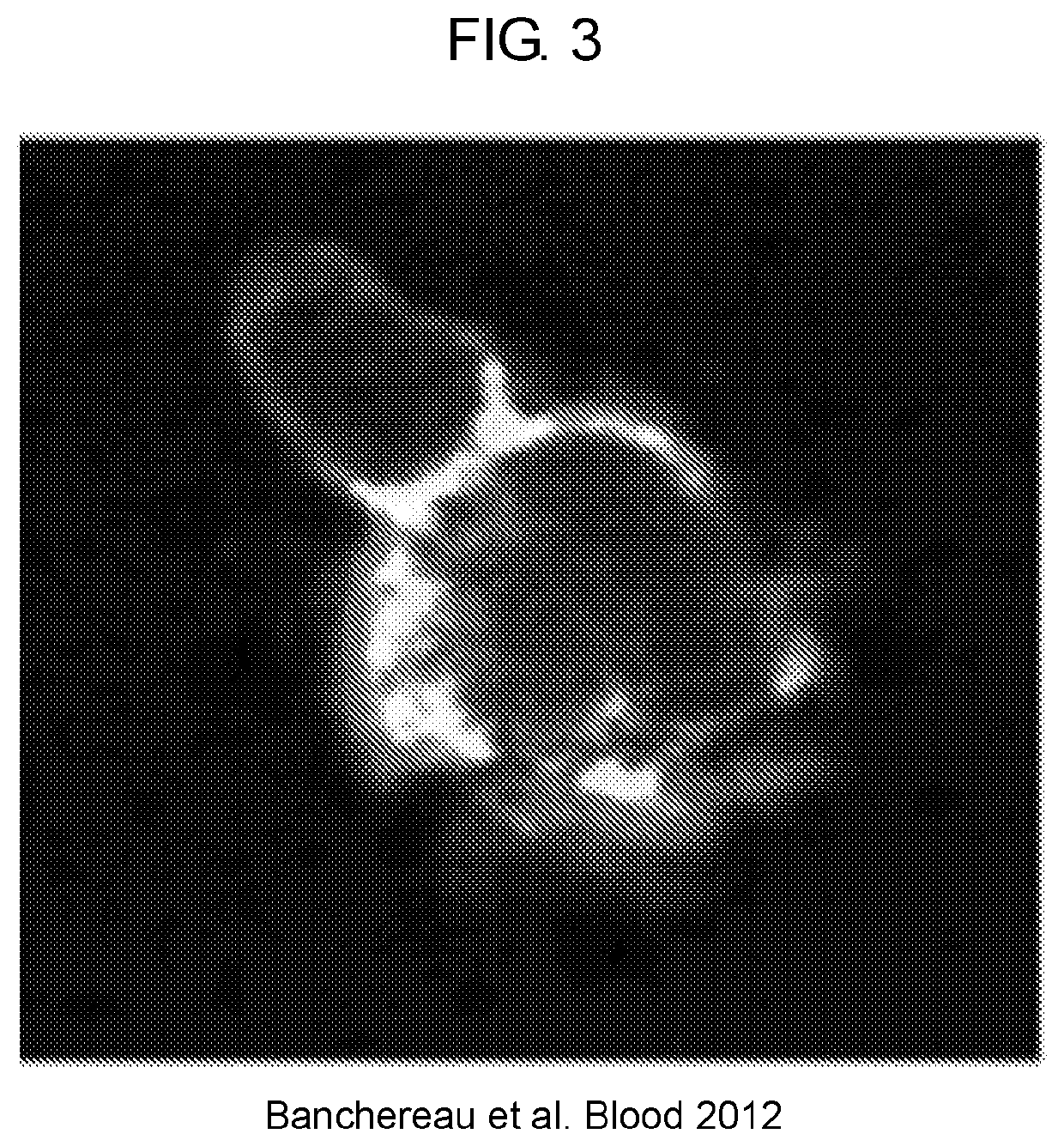Methods and compositions for t cell activation
a technology of immune cells and compositions, applied in the field of synthetic immune cells, can solve the problems of unfulfilled promise in the development of therapeutically effective cancer vaccines, challenge in the development of highly effective cancer immunotherapies, and the ability to robustly expand long-lived tumor specific t cells, etc., and achieve the effect of improving access
- Summary
- Abstract
- Description
- Claims
- Application Information
AI Technical Summary
Benefits of technology
Problems solved by technology
Method used
Image
Examples
example 1
of CTL Priming By LCs and Dermal DCs
[0131]The following example describes the priming of cytotoxic T lymphocytes (CTLs) by Langerhans cells (LCs) and dermal dendritic cells (DCs).
LCs Are Highly Efficient at Priming Tumor Specific CTLs
[0132]Studying the biology of skin DC subset is important to work toward the goal of designing novel vaccines and immunotherapies for viral infections or cancer. The healthy human skin contains multiple DC populations. Langerhans cells (LCs) are the major DC in the epidermis and DCs in the dermis and are identified based on the expression of CD1a and CD14. Co-cultures of antigen loaded LCs with naïve CD8+ T cells showed that LCs were very efficient at priming and cross-priming naïve CD8+ T cells compared to the dermal CD14+ DCs (see e.g., FIG. 2). The T cells primed by LCs had a high avidity TCR and were able to efficiently kill cancer cell lines (see e.g., FIG. 2). Comparative genomic analysis of the mouse DC subsets has revealed that human LCs share f...
example 2
nt of Mechanically Optimized Synthetic DCs Providing Three Signals For Efficient T Cell Expansion
[0134]The current methods for expanding T cells rely on a non-specific activation of patient T cells, including the regulatory T cells. There is a clear need for a controlled and robust expansion of tumor specific T cells, which are often against suboptimal epitopes and are masked by an immunosuppressive microenvironment. It has been demonstrated that some DC subsets are particularly adept for activating antigen-specific T cell responses. Because using an individual patient's DCs for T cell expansion would be an extremely costly and time-consuming proposition, a synthetic DC (comprising these same features) is a more economical and modular alternative for tailoring T cell expansion that is unique to the patient. Thus, a new method to target specific T cells in precise ways is being developed, which will allow fine-tuning of desired immune responses, improve the efficacy of existing adapt...
example 3
on of the Stiffness-Optimized Micro-DCs for T Cell Growth in the Form of 3D Microcapsules
[0146]Adoptive T cell therapy requires 3D micro-carriers for expanding and delivering tumor-reactive T cells next to the tumor site. Moreover, this transportable form of T cells in micro-capsules / beads can also be used as a vaccine for expanding tumor specific T cells in the patient. The naturally-derived hydrogels are found to be appropriate for cell encapsulation due to their excellent biocompatibility, biodegradability, and very low cytotoxicity. Among the naturally-derived hydrogel-forming materials, alginate is extensively used in cell encapsulation because of its rapid ionic gelation with divalent cations. The limitations of alginate due to poor cell adhesion and slow and uncontrolled degradation have been successfully overcome by incorporation of gelatin into the chemically modified alginate. This example shows the encapsulation of T-cells within alginate-based hollow-core microcapsules. ...
PUM
| Property | Measurement | Unit |
|---|---|---|
| temperature | aaaaa | aaaaa |
| temperature | aaaaa | aaaaa |
| time | aaaaa | aaaaa |
Abstract
Description
Claims
Application Information
 Login to View More
Login to View More - R&D
- Intellectual Property
- Life Sciences
- Materials
- Tech Scout
- Unparalleled Data Quality
- Higher Quality Content
- 60% Fewer Hallucinations
Browse by: Latest US Patents, China's latest patents, Technical Efficacy Thesaurus, Application Domain, Technology Topic, Popular Technical Reports.
© 2025 PatSnap. All rights reserved.Legal|Privacy policy|Modern Slavery Act Transparency Statement|Sitemap|About US| Contact US: help@patsnap.com



